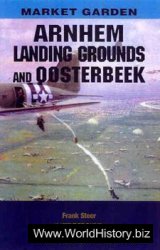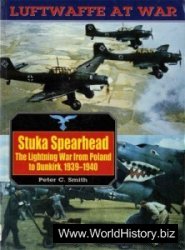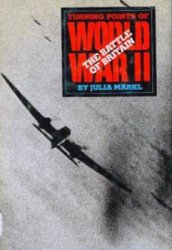Radio engineers had long known that strong and distant electrical discharges could bum out any resonantly tuned receiver. This rare occurrence was early noted when the harmonic content of certain lightning bursts were coincidentally received by shortwave systems. A station did not have to be “struck by lightning” in order to obtain the very same bum out effects! Even commercial power stations and their substations were often rendered useless when distant lightning stimulated certain impulse absorptions, explosively blasting components to pieces as if fi-om an unknovm source. Feeding enough electromotive force into any harmonically receptive system would suffice in destroying that system. Shortwave communications could be very easily “jammed” by loading the local continuum with static. It is curious again that these static techniques, Tesla techniques, used the explosive non-alternating impulses produced by powerful spark systems.
These systems, connected to the ground or to large overheard capacitances, absolutely overloaded all enemy transmission whenever desired. These jamming systems used both DC pulsed trains, as well as HE alternations. Sparks contained an enormous volume of harmonics. They were thus infinitely more capable of jamming every communications channel which surrounded their fundamental frequency. Jamming devices were designed to provide as broad band of disturbing static as possible. During the instances when these methods were used. Allied Forces employed the optical infrared or ultraviolet photophonic methods of Zinckler, Hartmann, Stevens, Larigaldie, Case, and Coblentz. In equally safe-security communications links, military often employed subterranean communications methods; radiosignalling methods which use conduction effects in the ground or water. In this avenue of research, VLF and ELF systems were eventually developed, supposed unreachable and unjammable radiowave channels.
In none of the developments associated with RADAR science had engineers realized those achievement of Dr. Nikola Tesla, whose pulsed Radiant Energy streams were neither electromagnetic waves, particles, nor commonly understood rays. In only one instance of the RADAR system development did engineers glimpse the truth of which Tesla spoke. The development of pulse systems required the production of abrupt, explosive electrical reports of short duration. Toward this goal, engineers instinctively ran to the old wireless literature and scoured the patents for a simple means to effect the needed pulsations. The decision to produce a pulse system required special new components, upgraded versions of those much older sparkgap systems so prevalent in the early days of wireless. Charged by a DC high voltage source, the energy stored in specially made oil-filled capacitors was discharged in a variety of ways.
How curious that the demanded requirements of RADAR were compelled to follow the lead already completed and advanced by Tesla. This path of redevelopment was one of necessity, Tesla having obeyed natural laws in his first electroimpulse investigations. In each component, the methods of Tesla had been closely, and inadvertently followed. The oil-filled capacitors were one of his early patents in impulse technology. In one system, engineers used the rotating sparkgap method to obtain a rapid series of brief high power pulses. These motor-rotated discharges, applied directly to the magnetron, proved unsuitable. The sharpness, or abrupmess of motor-driven discharges produced “blurry” currents; slow on the leading crest, and slower on the trailing crest Seeking for a means to produce sharp and definitive imptJses, the British engineers decided to redevelop certain of the fixed-gap shock excitation methods which were so prevalent throughout the early Century. They knew that there was an essential mystery to the high power developed in these early methods.
One favored experimental arrangement utilized an enclosed gap method, once described by Tesla. When atmospheric “quenching gaps” proved too noisy and unstable, they attempted sealing the sparkgap into specially made discharge tubes. Sealed glass discharge tubes were filled with pure hydrogen gas at low atmosphere pressure. Igniter electrodes were sealed into both tube ends. These, coated with a mixture of radioactive materials, fired only when critical thresholds were reached. These Thyratron Tubes, highly radioactive, could be clamped in series to form several highly resistant barriers. Across this long and highly resistant gap, capacitor charge could reach extremely high values until discharge. When they fired, the discharges were sharp and explosive.
These effects reminded the older engineers of rumours concerning unexplained munitions explosions near old wireless transmitters. In particular, there were several instances where these effects could be repeated, indeed implemented as weaponry. The strange UHF hybrid of Dr. Turpain, a French scientist, accidentally triggered munitions explosions in a nearby weapons cache. The vacuum tube spark relays of Daniel MacFarland-Moore were said to produce munitions explosions at great distances. This vacuum relay tube, patented in 1898, was reinvestigated with every succeeding war. The power released through sharp electroimpulse, the methods of Tesla, exceeded every
Radiowave method conceived as weaponry.
With each step in the development of rapid pulse, highpower RADAR, engineers realized their own proximity with the very effects which Tesla had so advocated as the only worthy electrical manifestation worth exploring. As these pulse methods were reaching their state of refinement, engineers found it possible to produce single DC impulses of extraordinary power. Components often ruptured when these explosive electrical applications were employed. Wires exploded. Gaskets and sealed electrodes ruptured. Magnetron tubes, high vacuum vessels, literally exploded. Here was that phenomenon of which Tesla spoke so highly. Here was the force which he so greatly esteemed. These explosive effects were the bizarre results of microsecond power pulses applied to magnetron tubes. The output of these tubes was therefore a train of successive RADAR wave alternations, nearly a thousand alternations per train. If it were possible to concentrate all this applied energy to a single, non-alternating RADAR burst, one would nearly approximate some of the effects of which Tesla later spoke. Attempts made to stimulate single pulse RADAR bursts require switching systems capable of firing prodigious power in equivalent to RADAR half-wave periods, a formidable task.
But there was now no time to stop and study these remarkable effects. The War had its demands. And so the dream, the imagination, the wonder, all were put aside as production went on. The few who took notice, and vowed to pursue the phenomenon which they had observed, very unfortunately became the leaders of a new field of weapons research. Tesla, who was first to advance the discovery of electroimpulse effects, was only devoted to the development of humanly elevating and beneficial applications. Tesla spoke of weaponry only with the emergence of each new war. The several conflicts which provoked his passive discussion of these matters through the Twentieth Century were forever mocked by the press, rejected by the academes, and studied by the military. There were those who observed his use of such beam instruments, notably those assistants who witnessed these powerful beanu-ay tests in Colorado and in Wardenclyffe.
The sizable nuclear weapons bibliography which had been amassed, provided enough data for planners to recognize the new research avenues required by their laboratories. In order to “keep ahead of the competition”, in both Allied forces and hostile nations, military gradually recognized that a multiple approach to modem warfare was now necessary. The nuclear hubris burned itself away, but left a yet needy oligarchy securing favors fi-om the military. These favors requested the development of nonnuclear means of warfare. Mihtary foimd new opportunity now. RADAR EMP phenomena might provide such means, and could be privatized, developed, and deployed without the jurisdiction of overseers and other taskmasters. An army equipped with RADAR EMP systems could move forward into enemy camps through the haze of destroyed communications equipment and, in the extreme use of
The art, over the felled bodies of infantrymen burned by the encounter.
In the existing state of nuclear art, all military activities had been turned over to air squadrons. They were the messengers who would carry the nuclear arsenals into “enemy House” territories. But an EMP assault would return the art of battle to a more controllable and conventional status, a condition now highly desired by ground oriented branches of the military. There were permissions and finances now flowing like wine over every military project. There could be no failure, no impossibihties, no resistance. Former years had not been as kind to the military. Budget allocations were meagre. Military authorities were supposed to plan and provide for the conunon defense in order to promote the general welfare. These post-War years were different, predicated on nuclear themes of fear and greatest concern for world security. Research on developing both weapons potentials and defense systems could proceed along simultaneous and parallel fronts. A great number of projects could now be developed. The world had grown complex, and military was supplying the most immediate kinds of security now. Moreover the oligarchy was supplying the funds.
With the development of very large Multi-Gigawatt Magnetron Systems, devices some six feet in diameter, new power thresholds were available for a variety of possible uses. With the new high-pulse RADAR systems came new methods which exceeded every shortwave jamming technique, but not because they produced disturbing static. Powerful pulsed RADAR beams could literally burn receiving circuitry into a useless hash. In some cases, and depending on the brevity of the applied power, high-pulse RADAR was actually able to burst radio receivers. Highly directed high-pulse RADAR energy were also found able to explode electronic systems at great distance. Reaching into enemy strongholds with all the stealth of an invisible plague, sudden highpower RADAR pulses could effectively destroy all communications equipment in a single burst This was but one of the instances in which military personnel had observed “Electric Burst”, “Electro Magnetic Pulse”, or “EMP” effects. Tesla, whose work was completely based on this electroshock phenomenon, forever mentioned the EMP effect He cited it as the main source of a new and unrecognized natural force. Having developed means for generating, controlling, and directing the effect, Tesla utilized radiations fi-om the EMP to drive all of his apparatus. Hectric impulse was the essential feature of all Tesla devices.
RADAR technology once again became the subject of intense research, the impetus to advance the art finding ample cause in the now ongoing Cold War. Laboratory consultants were acquired fi-om a great number of universities and industries, as military assumed a new managerial poise. High power pulsed designs were methodically produced by various laboratories who worked under mihtary auspices. Designing powerfully efficient pulse systems required the expertise of those who studied the Tesla patents. These new systems were capacitor dischargers utihzing equally special cold cathode sparkgaps, and produced extremely powerful non-altemating discharges. In its more benign applications, RADAR provided the possibility of multichannelled military communications links across the world. But other potentials had then occurred to engineers who perceived that the power delivered through the RADAR beams were not responsible for most of the effects. With more “geophysical” perspectives, it was gradually understood that RADAR generated conditions became the site where terrestrial energies were focussing, a RADAR pulse, if sufficiently potent to ionize an aerial path, would focus enough dielectric energy to constitute an ultimately powerful EMP ray.
In repeated tests, highly shielded radio equipment was completely burned by these sudden RADAR pulses. No amount of shielding could stop these explosive blasts. During wartime, such “electromotive shrapnel” could insure victory. Totally dependent on electronic communications, no enemy could withstand a multiple headed EMP assault. Those who wielded communications disruption techniques would win any future war. Indeed, those air squadrons which first move into battle theatres are the very ones equipped to jam and bum out enemy electronics systems. Fitted with large aerodynamic pods under their wings, the combined highpower RADAR pulses which they project are sufficiently powerful as to permanently destroy all radiowave communications systems.




 World History
World History









